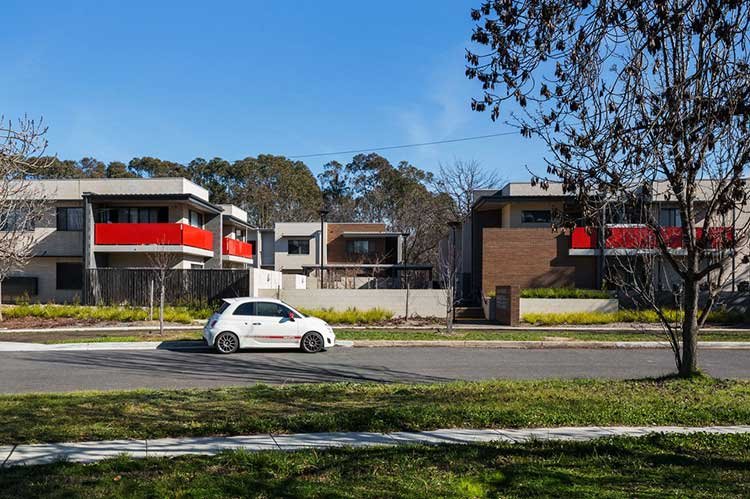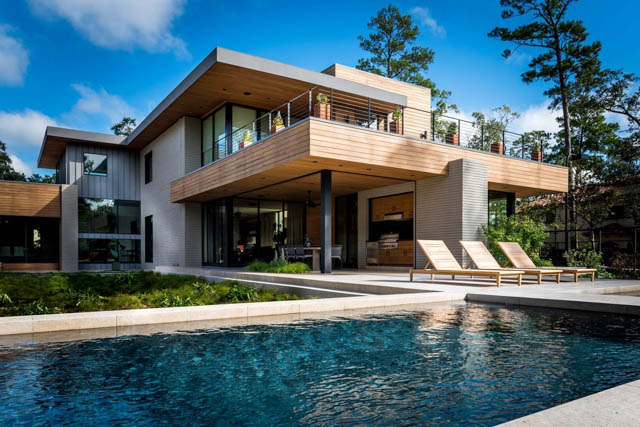Trusted Residential House Architect to Bring Your Vision to Life
Trusted Residential House Architect to Bring Your Vision to Life
Blog Article
Top Trends in Residential Style You Ought To Learn About
As household design proceeds to evolve, a number of compelling trends are forming the way we make and inhabit our living spaces. Key developments such as sustainable building methods, the integration of wise home modern technology, and the surge of modular homes emphasize a substantial change towards both capability and ecological duty.
Lasting Building Practices
An increasing number of residential tasks are embracing sustainable building methods, driven by a growing awareness of environmental effect and energy effectiveness. This shift is identified by the assimilation of green products, energy-efficient styles, and innovative building and construction approaches. Contractors and home owners are progressively focusing on making use of sustainable resources, such as bamboo and recycled steels, which not just decrease the carbon impact yet likewise improve the resilience and aesthetic allure of homes.
Including energy-efficient systems is one more crucial element of sustainable building - residential house architect. Features such as high-performance insulation, energy-efficient home windows, and photovoltaic panels are coming to be criterion in new property designs. These components not only add to lower energy intake yet likewise supply considerable long-term savings for home owners
Furthermore, the layout of sustainable homes commonly stresses all-natural light and ventilation, decreasing the dependence on synthetic lighting and climate control systems. Landscape design techniques, such as xeriscaping, further advertise sustainability by decreasing water use.
As the need for lasting living remedies remains to increase, the residential style field is poised to innovate and adjust, making sure that future homes are not just eco liable however also comfy and practical for their passengers. - residential house architect
Smart Home Innovation
Smart home innovation is changing the means property owners communicate with their space, enhancing safety, benefit, and energy management. This innovative technique integrates various gadgets and systems, allowing individuals to control their homes from another location or via automated processes. Central to this pattern is using clever gadgets such as thermostats, lighting, security video cameras, and devices, all linked via the Web of Things (IoT)
One of the most appealing features of wise home innovation is the capability to customize setups for optimum energy performance. Property owners can keep track of energy usage and change illumination, home heating, and cooling based upon their routines, substantially lowering utility expenses. Moreover, innovative safety systems geared up with wise locks and monitoring cams offer tranquility of mind, allowing remote tracking and signals to potential safety and security breaches.
Assimilation with voice-activated assistants boosts individual experience, enabling homeowners to regulate gadgets with basic voice commands. As technology continues to develop, the capacity for wise home systems to improve lifestyle expands, making them an essential factor to consider in modern domestic design. Inevitably, wise home modern technology is not simply a trend however a fundamental shift toward much more intelligent living atmospheres.
Open Idea Living
Open concept living has actually become a specifying function in modern residential design, defined by the removal of conventional barriers in between spaces. This design viewpoint promotes fluidness and connection within the home, permitting a seamless transition between areas such as the kitchen, eating, and living rooms. By getting rid of partitions and wall surfaces, open concept designs develop a feeling of space, promoting a welcoming environment that boosts social interaction.

In addition, this approach to residential style straightens with minimalism, focusing on functional simpleness and aesthetic coherence. House owners appreciate the have a peek here versatility of these designs, which can be conveniently adapted to reflect individual design via furniture arrangement and decor. As open principle living remains to gain traction, it stays a testament to advancing family dynamics and the desire for homes that boost link and convenience.
Biophilic Style
Biophilic layout has actually ended up being increasingly significant in domestic design, emphasizing the inherent link in between human beings and nature. This layout philosophy looks for to incorporate natural environments right into living areas, consequently promoting a sense of wellness and boosting the high quality of life for residents. By integrating features such as all-natural light, vegetation, and natural products, biophilic layout promotes an unified relationship between interior atmospheres and the all-natural world.
Crucial element of biophilic layout include huge windows that provide unhampered sights of exterior landscapes, living walls that present greenery into insides, and open floor plans that urge air movement and natural light penetration. Water features, both inside and outside the home, offer to develop comforting atmospheres and boost sensory experiences.
Moreover, the use of lasting materials not only sustains environmental stewardship but also adds to much healthier interior air quality. As recognition of ecological concerns boosts, property owners go to my blog are increasingly focusing on styles that reflect their link to nature. Basically, biophilic layout not just boosts aesthetic charm but likewise addresses emotional and emotional needs, making it an important pattern in modern domestic style.
Modular and Prefab Homes

In addition, prefab and modular homes are created with sustainability in mind. Lots of makers use energy-efficient systems and environment-friendly materials, such as solar panels and progressed insulation strategies, adding to reduced energy consumption and reduced energy expenses for property owners. The adaptability of layout alternatives enables for personalization, accommodating varied practical requirements and visual preferences.
As the need for cost effective housing remains to increase, modular and prefab homes present a practical option, dealing with both financial and environmental obstacles. Neighborhoods are significantly identifying the capacity of these structures, incorporating them right into metropolitan and rural settings. Overall, the pattern towards prefab and modular homes signifies a shift towards much more lasting, efficient, and versatile living settings, making them an essential aspect of about his contemporary household architecture.
Verdict
Lasting structure practices and clever home innovations enhance performance and convenience, while open principle living and biophilic design foster social communication and a link to nature. The surge of prefab and modular homes offers personalized and inexpensive solutions, reflecting a broader shift in the direction of functional and accountable living.
Key growths such as lasting structure practices, the assimilation of smart home innovation, and the increase of modular homes highlight a substantial change in the direction of both functionality and ecological obligation.The surge of modular and prefab homes has actually changed the residential style landscape, offering cutting-edge services for efficient and lasting living.Moreover, modular and prefab homes are made with sustainability in mind. On the whole, the trend towards modular and prefab homes symbolizes a shift toward much more sustainable, effective, and versatile living atmospheres, making them a critical element of contemporary household architecture.
Sustainable structure techniques and smart home innovations boost performance and comfort, while open principle living and biophilic layout foster social communication and a connection to nature.
Report this page